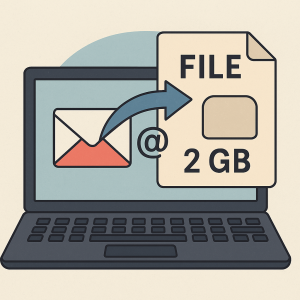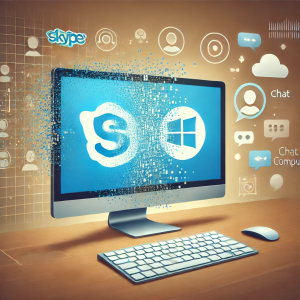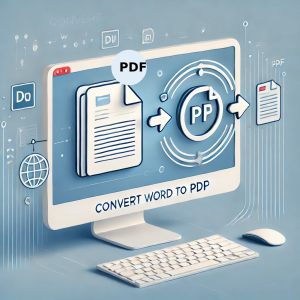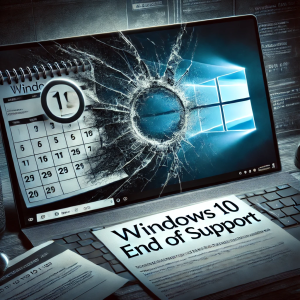Seeing 100% disk usage in Windows 11 can make your computer painfully slow, even if you’re not running heavy programs. This common issue affects many users, particularly those with older hardware or systems running background processes inefficiently. Fortunately, you can resolve this with some straightforward fixes. Here’s a complete guide to help you reduce disk usage and get your system back to peak performance.
What Causes 100% Disk Usage in Windows 11?
Some common causes include:
❗ Unnecessary background services
❗ Corrupted system files
❗ Outdated drivers
❗ Malware infections
❗ Windows search indexing overload
❗ Software conflicts
❗ Low system memory causing excessive paging to disk
Step-by-Step Solutions
Step 1: Disable SysMain (Superfetch) Service
This service, designed to speed up frequently used apps, can sometimes overwork the disk.
- Press Windows + R, type services.msc, and press Enter.
- Find SysMain in the list.
- Right-click and select Stop, then set Startup Type to Disabled.
Step 2: Disable Windows Search Indexing
Indexing constantly scans your files, contributing to high disk usage.
- Open services.msc again.
- Locate Windows Search.
- Right-click, select Properties, set Startup Type to Disabled, then click Stop.
Step 3: Perform SFC Scan and Repair Windows Image
Corrupted or missing system files can also lead to high disk usage. Running SFC (System File Checker) and DISM (Deployment Image Servicing and Management) can repair such files.
How to Perform SFC and DISM Scans:
- Open Command Prompt with administrator access (Search “cmd”, right-click, and select Run as administrator).
- Enter the following commands one at a time and allow each to complete before moving to the next:
SFC /scannow
DISM /Online /Cleanup-Image /CheckHealth
DISM /Online /Cleanup-Image /ScanHealth
DISM /Online /Cleanup-Image /RestoreHealth
These scans check for system file corruption, scan your Windows image, and attempt repairs where needed.
Step 4: Check for Malware or Viruses
Run a full scan using Windows Security or your favorite antivirus to rule out malicious software consuming disk resources.
- Go to Settings > Privacy & Security > Windows Security > Virus & Threat Protection.
- Select Scan Options, then Full Scan.
Step 5: Update Device Drivers
Outdated disk drivers can contribute to high usage.
- Press Windows + X and open Device Manager.
- Expand Disk Drives and IDE ATA/ATAPI Controllers.
- Right-click each and select Update Driver > Search Automatically for Drivers.
Step 6: Disable Startup Apps
Some unnecessary apps might auto-launch and consume resources.
- Press Ctrl + Shift + Esc to open Task Manager.
- Go to the Startup tab and disable any apps you don’t need running at boot.
Step 7: Adjust Virtual Memory
If your system runs low on RAM, Windows uses disk space as virtual memory, which increases disk activity.
- Search for Advanced System Settings.
- Under Performance, click Settings > Advanced tab > Change under Virtual Memory.
- Uncheck Automatically manage paging file size for all drives.
- Set a custom size (e.g., if you have 8GB RAM, set Initial Size = 8000MB and Maximum Size = 16000MB).
- Click Set, then OK.
Step 8: Install Windows Updates
Updating Windows fixes performance bugs and system inefficiencies.
- Go to Settings > Windows Update.
- Click Check for Updates and install any pending updates.
Step 9: Run a Disk Check (chkdsk)
File system errors can also spike disk usage.
- Open Command Prompt as Administrator.
- Run: chkdsk /f /r
- Restart your computer when prompted.
Step 10: Upgrade to SSD (if using HDD)
If your system still uses a traditional hard drive, upgrading to an SSD can massively reduce disk-related bottlenecks.
Bonus Tip: Use Task Manager to Monitor Disk Usage
Check which processes consume the most disk:
- Open Task Manager (Ctrl + Shift + Esc).
- Sort processes by Disk to spot the heaviest users.
Need Professional Help? Call Techie Kumar!
If these steps feel overwhelming, or you’d rather have an expert handle it for you, contact Techie Kumar for fast and reliable assistance.
📞 Call Techie Kumar at 1-866-618-9370 for expert help with performance optimization, disk cleanup, and computer repair.
Conclusion
High disk usage on Windows 11 can disrupt work and reduce productivity. Fortunately, these simple solutions — from disabling unnecessary services to repairing system files — can resolve most issues. And if you want a professional touch, Techie Kumar is just a call away.






